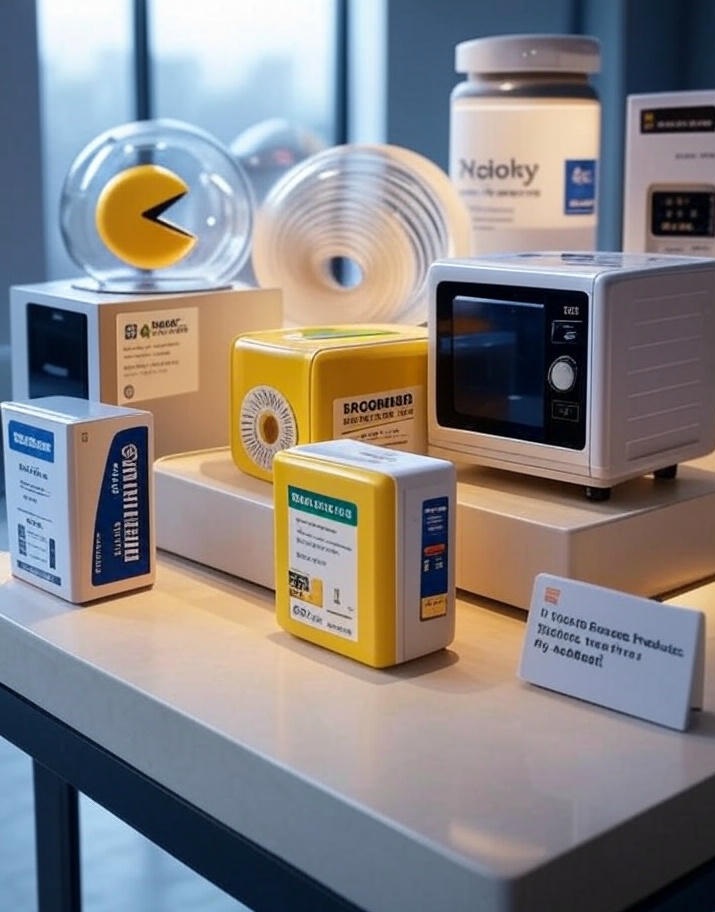In the world of innovation, not every discovery is the result of a well-executed plan. In fact, some of the most iconic products we use every day came into existence completely by accident. These stories are not only surprising — they’re also strangely inspiring.
What if your next big idea is hiding inside a mistake?

1. Penicillin – The Mold That Saved Millions
In 1928, Scottish scientist Alexander Fleming returned from a vacation to find something odd in his messy laboratory. One of his Petri dishes had been contaminated with mold — and the area around it was bacteria-free. Instead of throwing it out, he investigated. That mold turned out to be Penicillium notatum, which led to the development of penicillin — the world’s first true antibiotic.
This “accident” went on to revolutionize medicine and save millions of lives during World War II and beyond.
2. Microwave Oven – A Melted Candy Bar Sparked a Kitchen Revolution
In the 1940s, engineer Percy Spencer was working on radar technology when he noticed something peculiar: a chocolate bar in his pocket had melted during a test. The cause? A magnetron, which emits microwaves. Curious, he placed popcorn near the device — it popped!
Spencer realized that microwaves could cook food. His discovery gave birth to the microwave oven, which now sits in millions of kitchens worldwide.
3. Post-it Notes – A Glue That Didn’t Stick (Too Well)
In 1968, 3M scientist Spencer Silver was trying to develop a super-strong adhesive. Instead, he created one that was surprisingly weak — it stuck lightly to surfaces but didn’t bond permanently. For years, the invention sat unused.
Then came Art Fry, another 3M employee, who was frustrated that the bookmarks in his church choir hymnal kept falling out. He used Silver’s adhesive to keep his notes in place without damaging the pages. Thus, the Post-it Note was born — an office staple created entirely by mistake.
4. Potato Chips – A Sarcastic Response to a Picky Customer
In 1853, at a restaurant in Saratoga Springs, a customer kept sending back his fried potatoes, complaining they were too thick and soggy. Frustrated, chef George Crum sliced the potatoes as thinly as possible, fried them until crispy, and loaded them with salt — just to make a point.
To his surprise, the customer loved them. The crispy slices became a hit and eventually evolved into the globally beloved snack we know today: potato chips.
5. Coca-Cola – A Failed Cure for Headaches That Became a Global Icon
In 1886, pharmacist John Pemberton was trying to create a headache remedy and nerve tonic. His formula combined coca leaves and kola nuts, hence the name “Coca-Cola.” Originally marketed as a medicinal syrup, he mixed it with carbonated water — and people began drinking it for refreshment rather than relief.
Though Pemberton never saw the full success of his creation, Coca-Cola went on to become one of the most recognizable brands on the planet.
Lessons Hidden in Accidents
What do these stories teach us? That failure isn't always the end — it’s often the beginning of something better. The people behind these inventions didn't ignore their mistakes — they embraced them, explored them, and transformed them into breakthroughs.
- Stay curious – Ask questions when things go “wrong.”
- Stay observant – Pay attention to what others overlook.
- Stay open-minded – Sometimes the best ideas aren’t the ones you were looking for.
What Accidental Invention Might Come Next?
Could it be yours? The next time you feel like you’ve failed, remember: You might just be on the verge of something remarkable. Because history proves — some of the most brilliant innovations happen when no one is trying to invent anything at all.
Now you know: not all mistakes are bad. Some make history. Which of these stories surprised you most?









